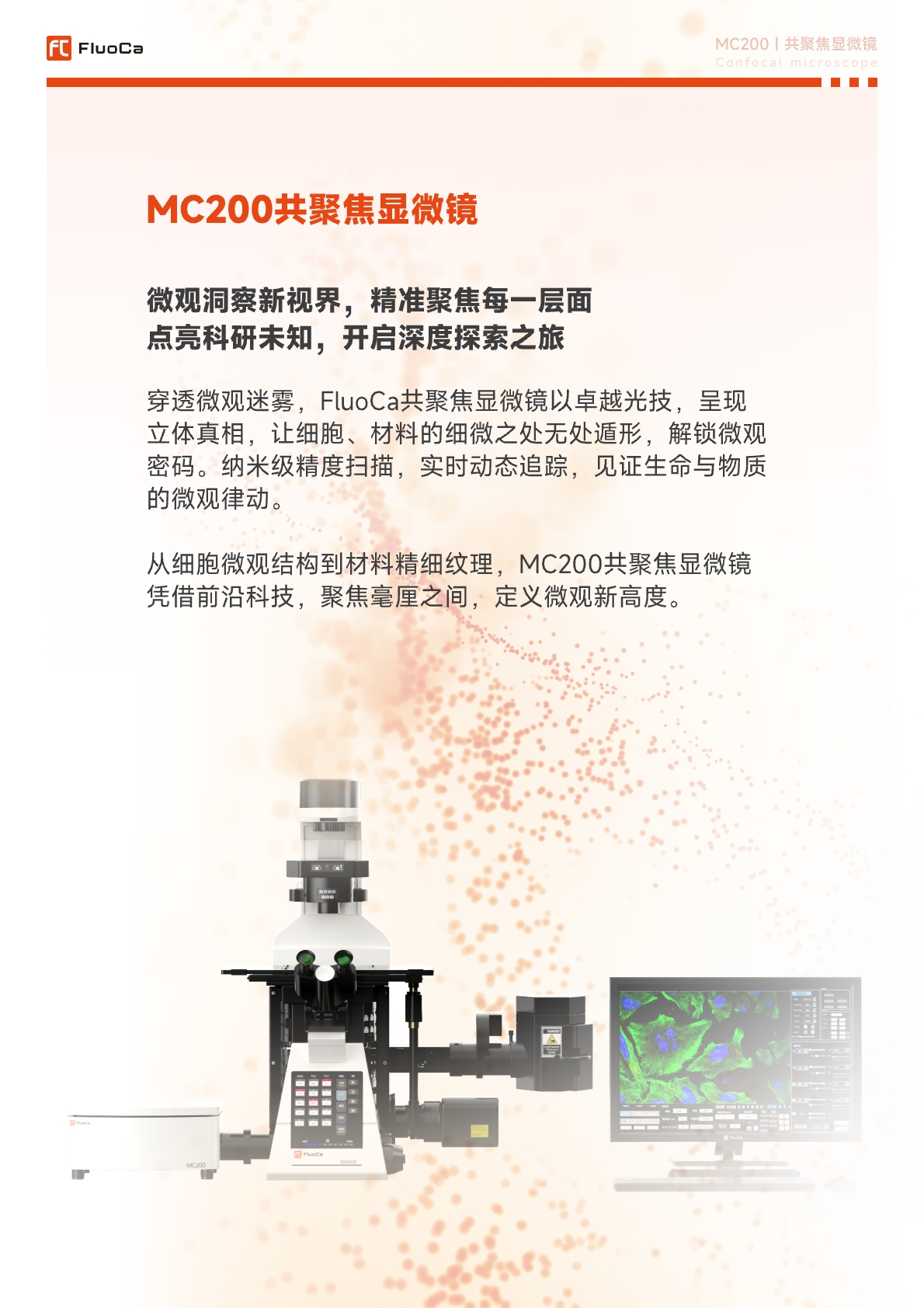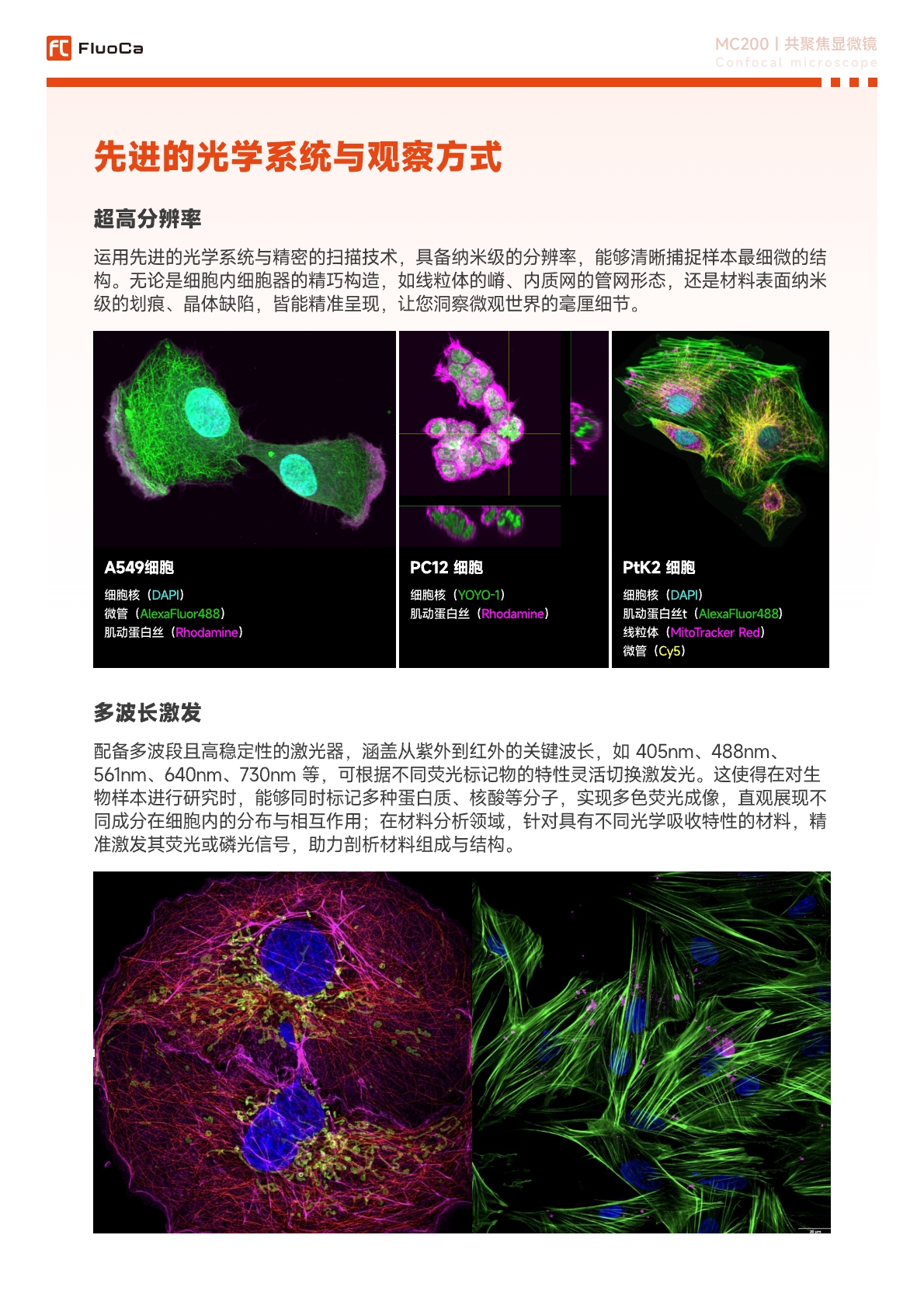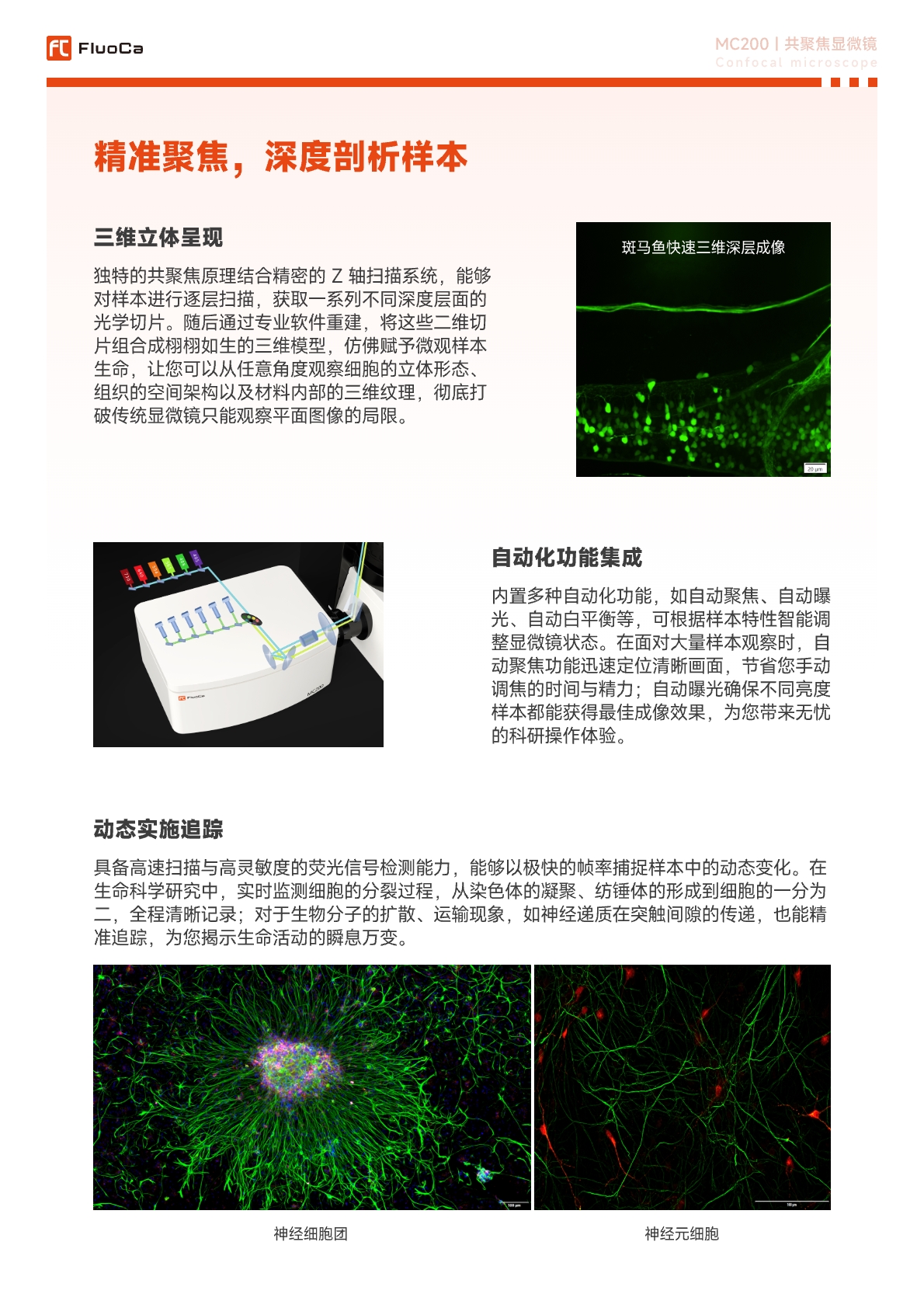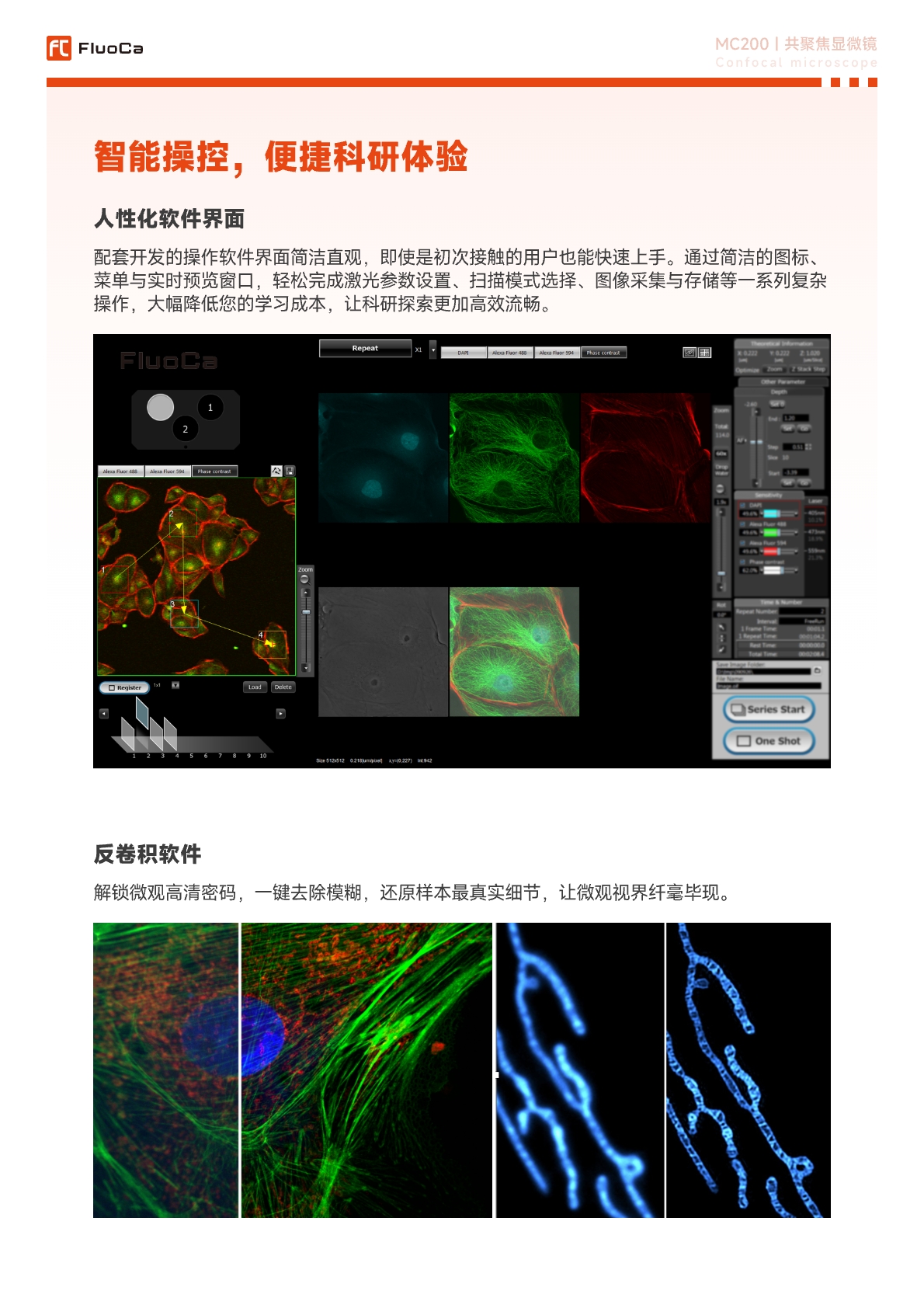
The newest addition to the Yokogawa CSU spinning disk family enables Super-resolution. The new CSU-W1 SoRa is the best tool for super resolution imaging. Just like the CSU, high-speed real time imaging can be performed with super-resolution. By modifying the Nipkow disk with a (patented) micro lens pinhole array the resulting MLPHA-disk – or Super-resolution disk – enables optical photon reassignment. Resolution improvement (latera: 150 nm; axial: 450 nm) is achieved without additional computation and with the same speed, life cell quality and easy-to-use handling as one might expect from a spinning disk system.
Effective "Field of View" depending on the SoRa magnification changer
magnification: selectable 1.0x, 2.8x and 4.0x
4.0x for 60x objective
2,8x for 100x objective
XY/Z resolution (optical super resolution) 150nm / 320nm
XY/Z resolution (after deconvolution) 120nm / 300nm
XY resolution of approx. 120nm
XY resolution has been improved by approximately 1.4x the optical limit based on spinning-disk confocal technology. Furthermore, a final resolution approximately twice the optical limit is realized through deconvolution.
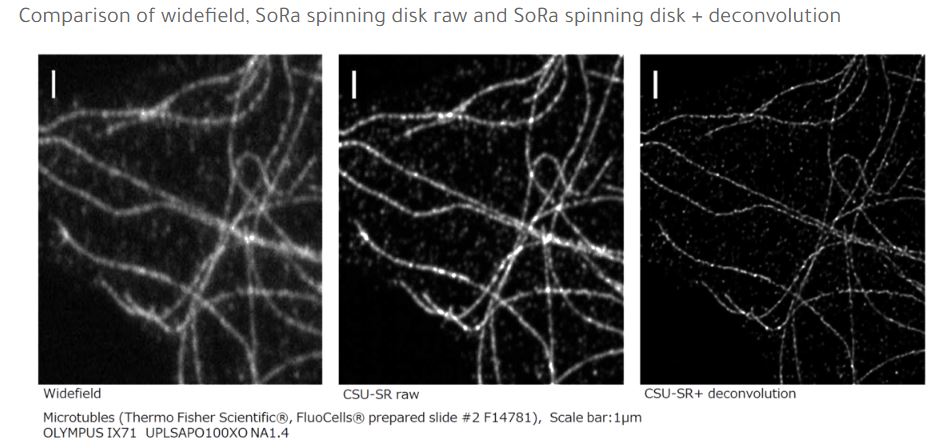
Live SR uses structured light illumination, combined with software algorithms, and mounted on a Spinning Disk Confocal to achieve a horizontal resolution of up to 105nm. Compared with other super-resolution methods, it has no restrictions on specific fluorophors and ensures lower photo-toxicity, which is particularly suitable for high-resolution imaging of live cells.
Live-SR is compatible with CSU-X1 and CSU-W1.

Key features
1. 3D resolution improvement up to 105nm*
2. Access to optically improved intermidiate images (160nm*)
3. Acquisition speed up to 200 fps**
4. Live / Focus mode in real time
5. Motorized bypass mode
6. No specific fluorophors required
7. Low photo-toxicity for live imaging
8. Simultaneous multicolor imaging
9. Batch processing (channel, z stack , multiple position)
10. Combination with FRAP/PA and photo-ablation capabilities
11. In depth imaging with water or silicone objectives
*with BFP tagged cells
**with CSU-W1

转盘共聚焦
前面一篇文章“
共聚焦显微镜的入门介绍”里我们介绍了共聚焦激光扫描显微成像技术(Confocal Laser Scanning Microscopy, CLSM)和双转盘式共聚焦成像技术(Spinning Disk Confocal)。与点扫描共聚焦最大的区别是,转盘共聚焦同时扫描多个激光焦点,然后通过面阵检测器(area detector)比如CCD/sCMOS/EMCCD相机来高速采集图像信号。这样,整体成像速度得到了极大提高,同时也能减少对样品的光漂白光毒性。因此转盘共聚焦特别适合用于活细胞共聚焦成像。
光学超分辨
由于光学衍射的限制,荧光显微镜在细胞生物学里能观察到的亚细胞结构局限于200nm左右,需要有更高的光学分辨率来解析这些结构。过去的十几年,光学超分辨技术发展得如火如荼,photoactivatable localization microscopy (PALM; Betzig 2006), stochastic optical reconstruction microscopy (STORM; Zhuang 2006), 以及 stimulated emission depletion microscopy (STED; Hell 1994) 可以将光学分辨率提高至50nm,但是PALM/STORM/STED技术在成像速度上满足不了活细胞的成像需求,同时由于原理上的限制,现阶段有些现有生物荧光样品还不能使用这些超分辨技术。还有一种成像技术structured illumination microscopy (SIM; Heintzmann and Cremer, 1999) 可以将分辨率提到到120nm左右,并且对于生物荧光样品的限制不多,普通荧光显微镜或者共聚焦显微镜能用的样品在SIM系统上也能使用。但是,SIM技术在成像速度上的改进不是很多,提高到11帧/秒,因为需要9至15帧左右的原始图像来重建一幅SIM图像。在此基础上,3D-SIM可以将轴向分辨率提高到100-200nm。但是大部分情况下,SIM成像深度局限在10 - 20um,而且SIM图像重建时容易产生条纹状瑕疵。针对活细胞/活组织显微成像,转盘共聚焦有非常大的优势,极低的光毒性和光漂白对于长时程荧光成像有很大的帮助。如果有一种技术,既能够保留转盘共聚焦的优势,又能够在特定的实验需求时提供更高的光学分辨率,那对于生命科学领域内的很多显微成像实验将带来革命性的变化。
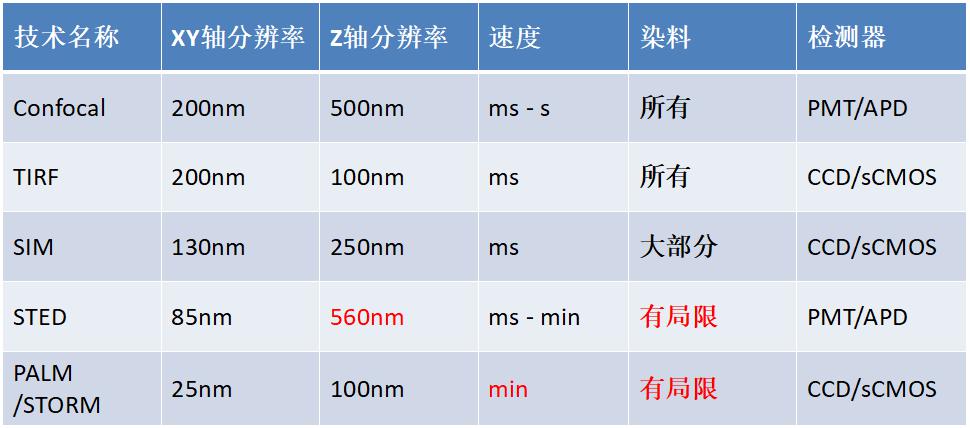 转盘共聚焦 + 光学超分辨
转盘共聚焦 + 光学超分辨
Spinning-disk based Super-Resolution采用Yokogawa CSU-W1扫描头,可以在宽场荧光Widefield、转盘共聚焦Confocal、以及转盘超分辨SpinSR三个模式之间自由切换。这种情况下,可以根据实验的具体需求来选择更适合的成像模式,也有些时候需要拍摄两种模式下的荧光图像以此来确认具体哪种技术更适合样品。那么,基于转盘共聚焦的超分辨是如何实现的呢?从广义上讲,转盘在高速扫描的时候,将激光在样品上也形成了类似SIM的结构光照明。和传统SIM技术不同的是,转盘SR技术在科研显微相机检测之前将荧光信号通过一样的条纹结构,从而实现信号的解调制;传统SIM技术在相机前没有解调制,需要三张甚至更多的原始图像来重建SIM超分辨图像。通过转盘SR这种超分辨成像方式,可以实现更高帧速,且避免传统SIM技术在图像重建时候容易出现的条纹瑕疵。以下图像是自噬性溶酶体的XZ截面图(左图confocal右图SR),充分说明了转盘SR技术提高了XY以及Z轴三维分辨率。
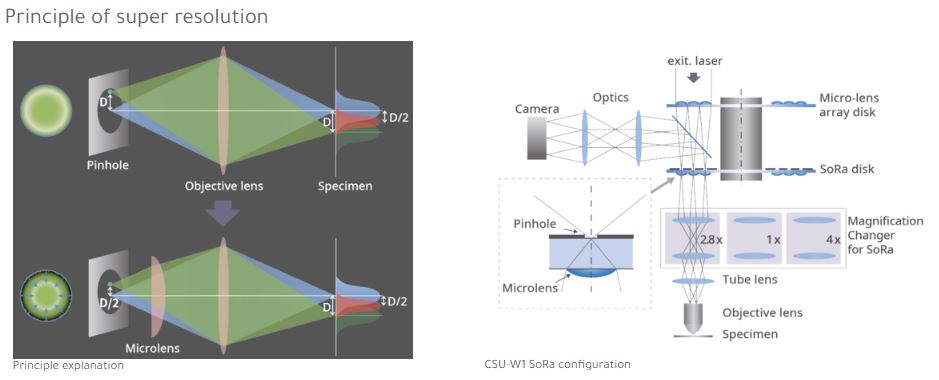 转盘SR的成像深度
转盘SR的成像深度
硅油物镜(silicone oil)已经在各种显微成像系统里验证了其对成像深度的帮助,由于硅油的折射率相比较水更接近生物细胞或组织的折射率,可以极大提高图像质量以及成像深度。下右图是60倍硅油物镜在大脑新皮层(Neocortex)的共聚焦成像深度和图像质量。转盘共聚焦扫描头CSU-W1配合硅油物镜,也验证了在生物组织中可以实现较高的成像深度。
